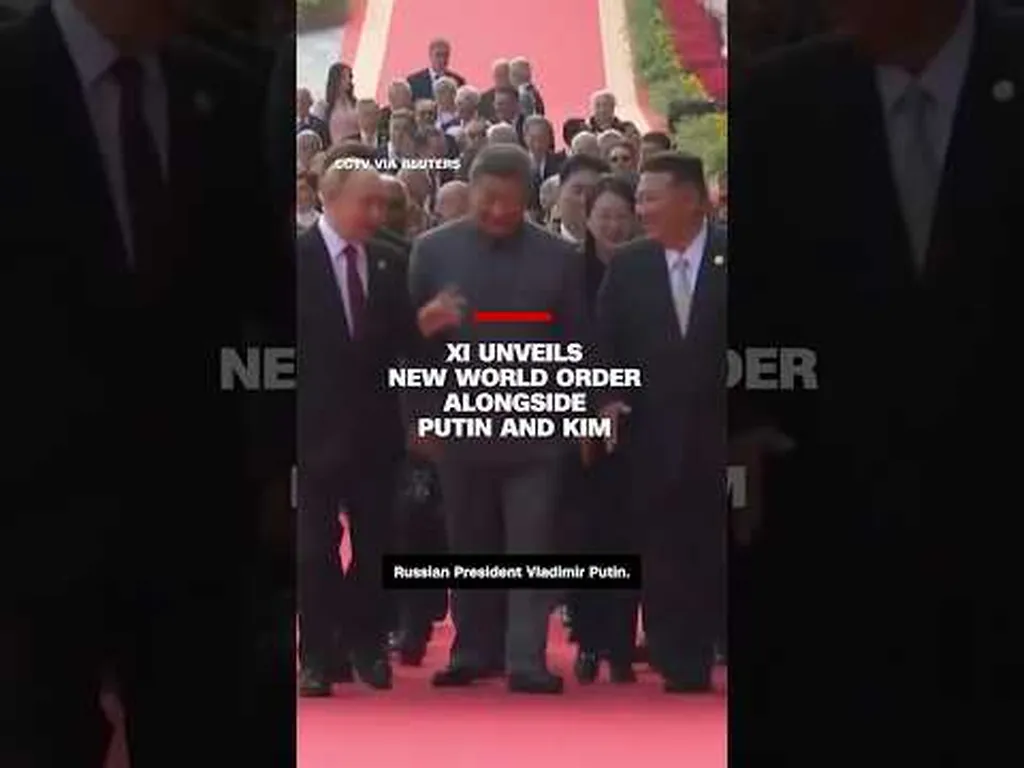China’s latest military parade, held to commemorate the 80th anniversary of Japan’s surrender in World War II, offered a stark reminder of the country’s rapid advancements in defence technology. The display of cutting-edge weaponry, including hypersonic ballistic missiles, anti-ship missiles, and next-generation unmanned aerial vehicles (UAVs), has sparked debate among analysts about China’s potential to challenge Russia’s position in the global arms market.
The parade showcased China’s growing arsenal, with the YJ-21 anti-ship missiles and DF-26D intermediate-range ballistic missiles—equipped with hypersonic technology—standing out as particularly notable. These systems, along with various new UAVs, underscore China’s commitment to developing advanced, AI-integrated military capabilities.
Retired PLA Senior Colonel Zhou Bo, speaking to state broadcaster CGTN, asserted that China’s integration of artificial intelligence into its weapon systems positions it to become one of the two dominant players in the future global arms market, alongside the United States. “American weapons are combat-tested, expensive, and allies have to buy because they have to be politically correct, but the Chinese system is affordable. It’s good. And it is also equally integrated with AI,” Zhou said.
This assertion raises critical questions about the future of global arms sales. While China’s technological advancements and cost-effective systems could make it an attractive option for nations seeking to modernise their militaries, geopolitical realities may limit its market penetration. Many US allies, particularly those in NATO and the Indo-Pacific, remain hesitant to adopt Chinese military technology due to political and strategic considerations.
The US has long dominated the global arms market, leveraging its combat-proven systems and strong diplomatic ties to secure contracts. However, China’s rise as a defence technology powerhouse could disrupt this dynamic, particularly in regions where cost and technological sophistication are prioritised over political alignment.
For China, the challenge lies in overcoming these geopolitical barriers. While its weapons may offer a compelling alternative in terms of affordability and AI integration, the lack of combat experience and lingering distrust among US-aligned nations could hinder its expansion into key markets.
The parade also highlighted China’s growing confidence in its military capabilities. By showcasing its technological advancements on a global stage, China is sending a clear message about its ambitions to become a leading defence exporter. However, whether this translates into significant market share gains remains to be seen.
In the short term, China is likely to focus on expanding its influence in regions where US dominance is less pronounced, such as Africa, the Middle East, and parts of Southeast Asia. These markets, driven by budget constraints and a desire for advanced technology, could provide China with a foothold in the global arms trade.
Ultimately, China’s ability to challenge Russia and the US in the arms market will depend on its capacity to build trust and demonstrate the reliability of its systems. While the parade has underscored its technological prowess, the geopolitical landscape remains a formidable obstacle. As China continues to refine its defence exports strategy, the global arms market is poised for a period of intense competition and realignment.

